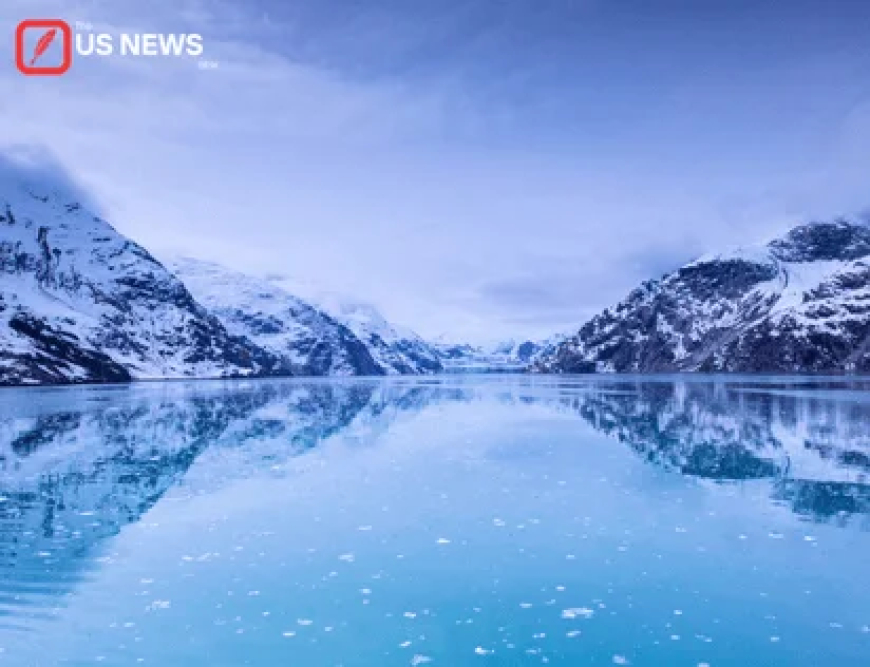Arctic Diatoms’ Subzero Survival: How Alaska’s Microbes Could Shape U.S. Climate Resilience
Stanford researchers uncover how Arctic diatoms survive subzero ice channels, offering lessons for U.S. climate resilience in Alaska. Insights may shape federal policy.

ANCHORAGE, Alaska — In the frozen silence of Alaska’s Arctic ice channels, a microscopic drama is unfolding. Diatoms—single-celled algae encased in glasslike shells—are demonstrating survival mechanisms in subzero conditions that scientists believe could reshape U.S. strategies for climate resilience.
Stanford University researchers, leading an on-site expedition this summer, captured time-lapse videos of diatoms gliding within icy microchannels, a feat once thought impossible. Their findings, coupled with molecular data, are offering new insights into how life adapts to extreme cold and how those adaptations might apply to broader ecological and policy challenges across the United States.
A Window Into Survival at the Edge of Life
Diatoms are not new to science. They have long been recognized as primary producers in marine ecosystems, converting sunlight into oxygen and biomass. What is new, however, is the level of detail in which their survival at extreme subzero temperatures is being documented.
Using specialized microscopes cooled to mimic Arctic sea ice conditions, researchers observed diatoms moving, dividing, and even forming colonies inside channels thinner than a human hair. The team’s molecular sequencing revealed gene clusters responsible for antifreeze proteins and lipid metabolism, suggesting that these organisms are hardwired to endure cycles of freezing and thawing.
“Watching these diatoms in motion inside frozen water channels changes the way we think about microbial life,” said Dr. Laura Simmons, lead microbiologist at Stanford’s Polar Research Lab. “They are not merely surviving—they are thriving under conditions that would kill most organisms.”
Alaska’s Ecosystem at a Crossroads
For Alaskans, this research is more than scientific curiosity. The state is warming at nearly four times the global average, threatening its fisheries, permafrost stability, and coastal communities. Diatoms, which form the foundation of the food web, play a vital role in regulating carbon and supporting fish populations critical to the region’s economy.
Local officials in Nome and Barrow have expressed cautious optimism about the study. “If diatoms can withstand these stresses, perhaps their biology holds lessons for how we design resilient systems—whether in fisheries management or renewable energy solutions adapted to extreme environments,” said Mayor Denise Foster of Nome.
U.S. Climate Policy Implications
The discoveries arrive at a politically charged moment. The Biden administration’s Arctic Resilience Strategy, inherited and adapted under President Donald Trump’s current policy review, places a strong emphasis on leveraging science for infrastructure planning.
Diatoms’ antifreeze proteins could inspire innovations in biotechnology, including frost-resistant crops or energy-efficient storage systems. Equally significant, their metabolic pathways provide models for carbon capture in cold climates—an urgent consideration for U.S. climate policy.
As the National Oceanic and Atmospheric Administration (NOAA) continues to issue warnings about rapid Arctic ice loss, lawmakers face mounting pressure to integrate frontier science into disaster preparedness. Studies like Stanford’s offer evidence-backed pathways that extend beyond theoretical debates.
Beyond the Arctic: Global Relevance
While the immediate implications focus on Alaska, the relevance is global. Similar diatom strains exist in Antarctica and high-altitude glaciers, suggesting a universal biological toolkit for extreme survival. U.S. leadership in publishing these findings positions the country as a frontrunner in both polar research and climate diplomacy.
“Understanding diatom survival at the molecular level is more than an academic pursuit—it’s a blueprint for adaptation in a warming world,” said Dr. Miguel Alvarez of the Institute for Advanced Climate Studies.
Conclusion: A Microscopic Beacon for Macroscopic Challenges
From time-lapse videos of icy glides to molecular maps of survival, Arctic diatoms are rewriting what resilience means at both the cellular and national scale. Their lessons, now visible through the lens of Stanford’s fieldwork, underscore a critical truth: the smallest organisms may hold the biggest keys to U.S. climate resilience.
As Alaskan leaders weigh adaptation strategies, and federal policymakers debate next steps, diatoms continue their silent march through frozen channels—a reminder that nature’s innovations may already be paving the way for human survival in a changing Arctic.
What's Your Reaction?
 Like
0
Like
0
 Dislike
0
Dislike
0
 Love
0
Love
0
 Funny
0
Funny
0
 Angry
0
Angry
0
 Sad
0
Sad
0
 Wow
0
Wow
0



































